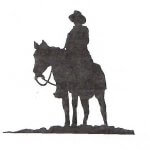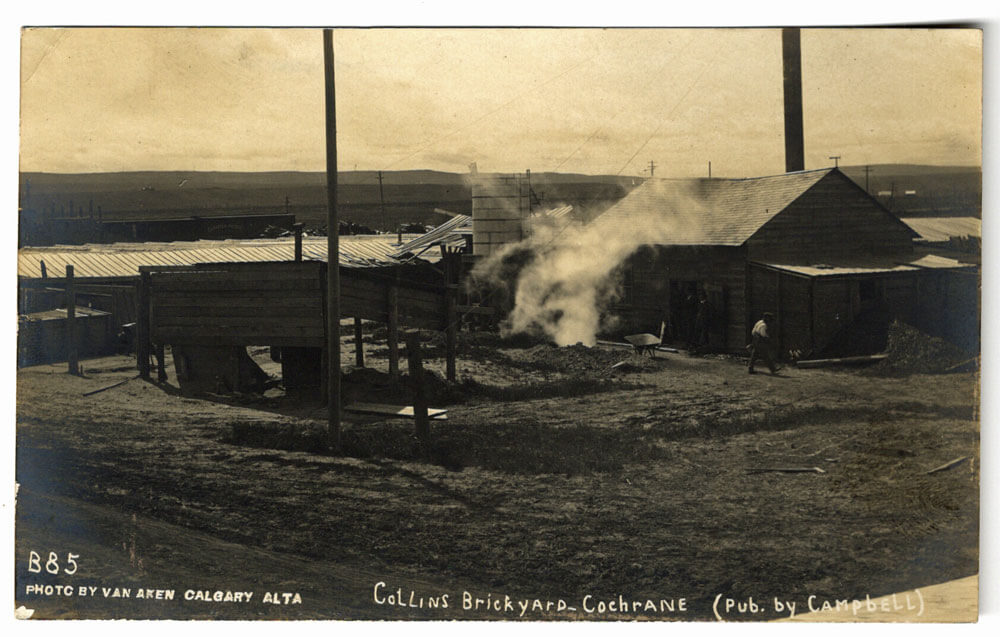pg 37, A Peep into the Past Vol 1, Gordon and Belle Hall
Pete Collins’ brickyard was situated about 300 yards directly south of where the old Cochrane Ranche house sat. The house and property at that time was owned by Beynon and Davis, who operated a dairy and pig farm from 1919 until about 1948. However, the year I am writing about was the summer of 1928, which was the last summer the brickyard was in operation.
The brick factory itself was composed of three brick kilns, 10 drying sheds, a big work shed, a steam engine and a boiler room with a high smokestack about 50 feet in the air. The three kilns were situated facing the spur railway line which crossed the road and came in so that bricks could be loaded directly from the kiln into a boxcar, and I imagine it took a few boxcars to empty a kiln.
My father worked there also. His job was to dump the car full of clay that was pulled up out of the pit by a winch cable. The car ran on a narrow-gauge track and carried about a yard of clay. This was dumped overhead into the huge mixing machine, which looked like a huge meat grinder. At the bottom of this large machine, two or three men worked. They had moulds that had to be washed and sanded, then a man would stick it into the machine just like a modern tape going into a cassette. When it kicked out, the moulds were packed with clay. This was dumped upside down on a pallet of wooden slats, and there lay the five bricks. The pallets were then wheeled by wheelbarrow to the drying sheds, where they were placed in rows up to about five-feet high. Each shed held 5,000 bricks, 2,500 to a side. The bricks sat there for three days, and on the fourth day, my job was to turn them on edge. I could do about 1 1/2 sheds per day at $3 per shed, which amounted to about $4.50. Gloves were of no use, as a pair would wear out in about an hour, so we used strips of belting from machinery belts, 2 – 3 inches wide and cut slits for our fingers to go through.
There was a bit of fun with a Chinese cook. It seems the men must have been tormenting him earlier. The cookshack stood close to the boiler room near the creek. Someone was throwing mud balls down the alleys and one went in the cookhouse door. Just as quickly, the Chinese cook came out with a huge carving knife, and he was ready for war, pigtail flying, screaming in Chinese. He cleared everything as he went. I ended up in a kiln, out of sight. The machinery was running, but there wasn’t a man anywhere. Finally, he ran out of wind and went back to the cookhouse.
Redcliff, down near Medicine Hat, started to make dry-pressed bricks. They could do it faster, and cheaper, and soon put the brickyards like Collins out of business.




I was wondering why bricks were no longer made in the Cochrane area and found the answer on your site. Thank you for providing this type of local history online. Cheers
Karen